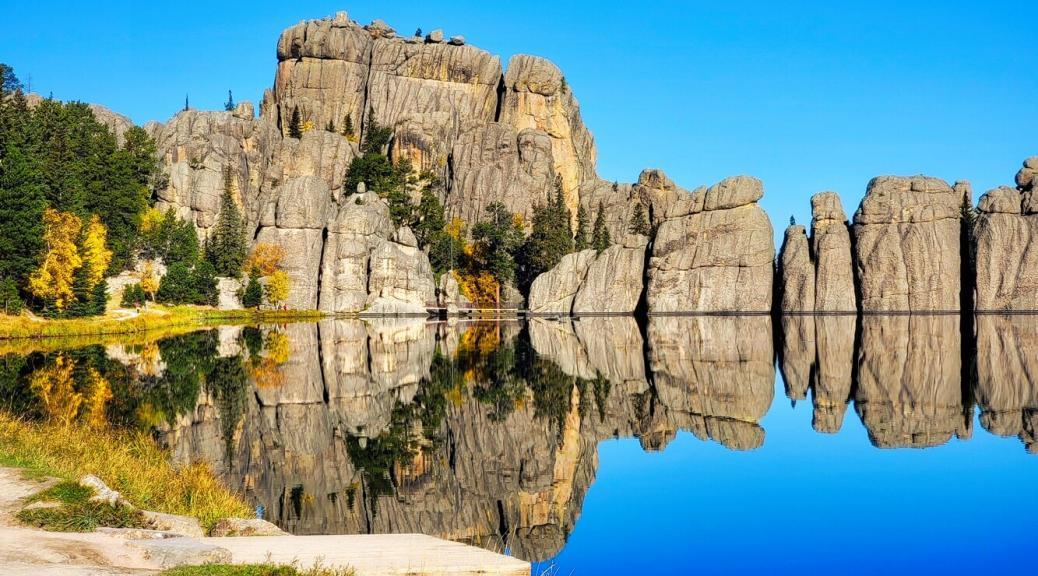
Hill City, SD
We spent a week near Hill City primarily to see Mount Rushmore and to visit a few of the nearby towns. As you will soon find out, we didn’t even know about Custer State Park when we did our original planning but we’re sure glad we were tipped off to it when someone found out we were going to be in the area. We were sure glad we didn’t miss it as we took more pictures there than anywhere else. The featured image at the top of this post is of Sylvan Lake within the park and is one of my favorite pictures of all time. The beauty in this part of South Dakota is just unbelievable!
Mount Rushmore
In 1923 Doane Robinson proposed carving Old West heroes in the needles of Cathedral Spires, some of the same ones seen in the pictures along the Needles Highway below. Robinson approached sculptor Gutzon Borglum about the project. Borglum shot down the idea of Old West heroes and instead wanted to place as close to heaven as possible the words of our leaders and their faces, to show posterity what manner of men they were. He felt that a monument’s dimensions should be determined by the importance to civilization of the events commemorated and he also wanted the monument to endure until the wind and rain alone would wear them down.
In 1925 Federal and state legislation authorized the carving of the memorial and fundraising begins. In 1927 President Calvin Coolidge dedicates the memorial and Borglum begins carving. 90% of the work removing stone from the mountain was done with dynamite with tools being used to finish the sculpture. This work was done by miners, farmers, and others with Borglum supervising the work. In 1941, Gutzon Borglum died and his son Lincoln oversaw completion of the work that same year. The original goal was to complete each statue down to the waist of each president but due to the untimely death of Gutzon, work was completed short of that goal.
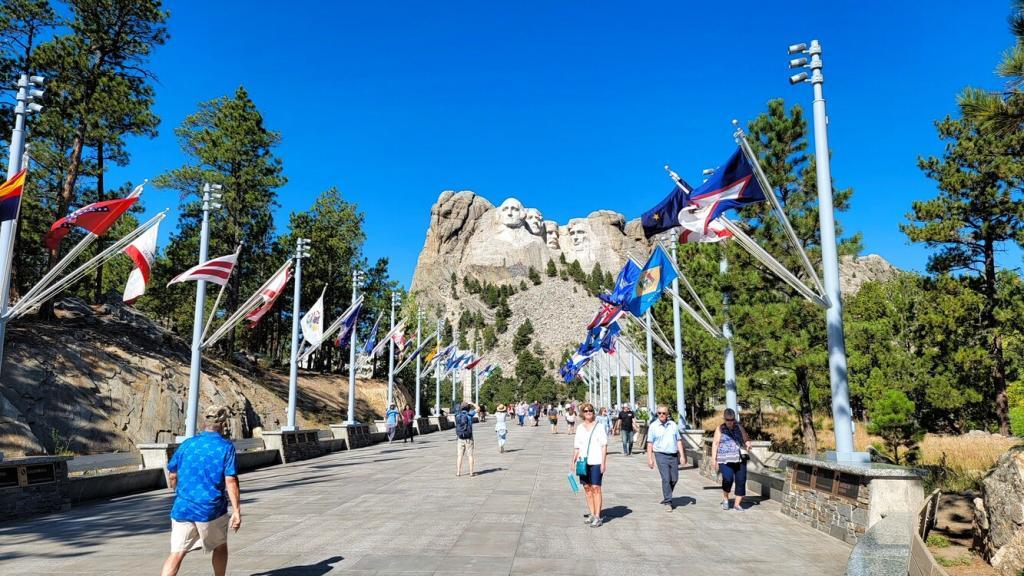
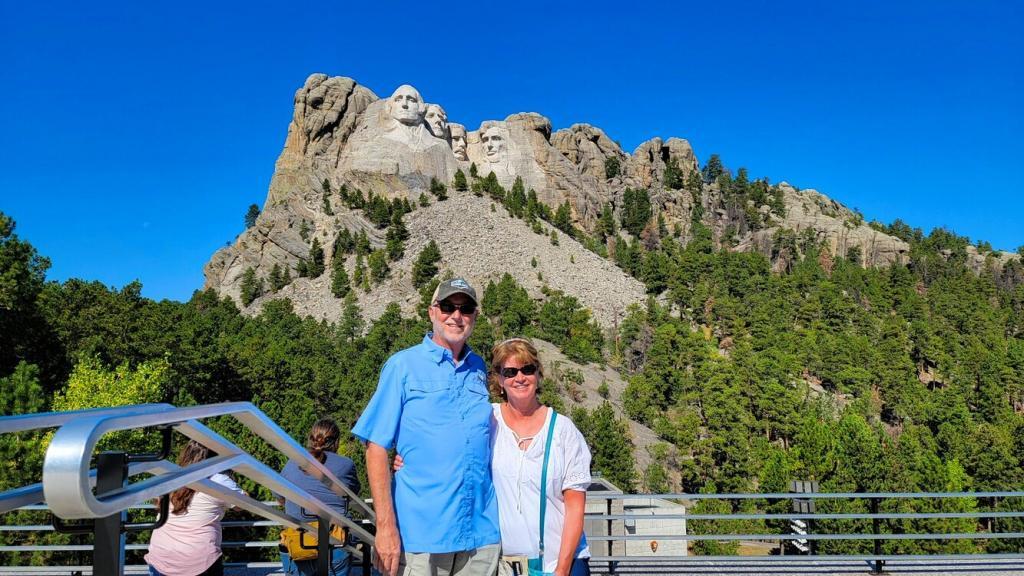

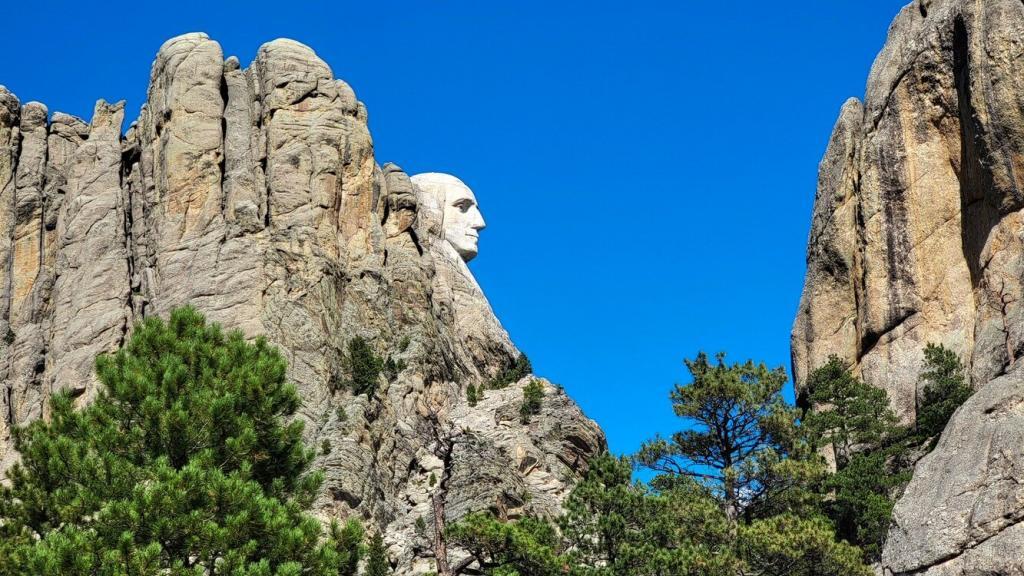


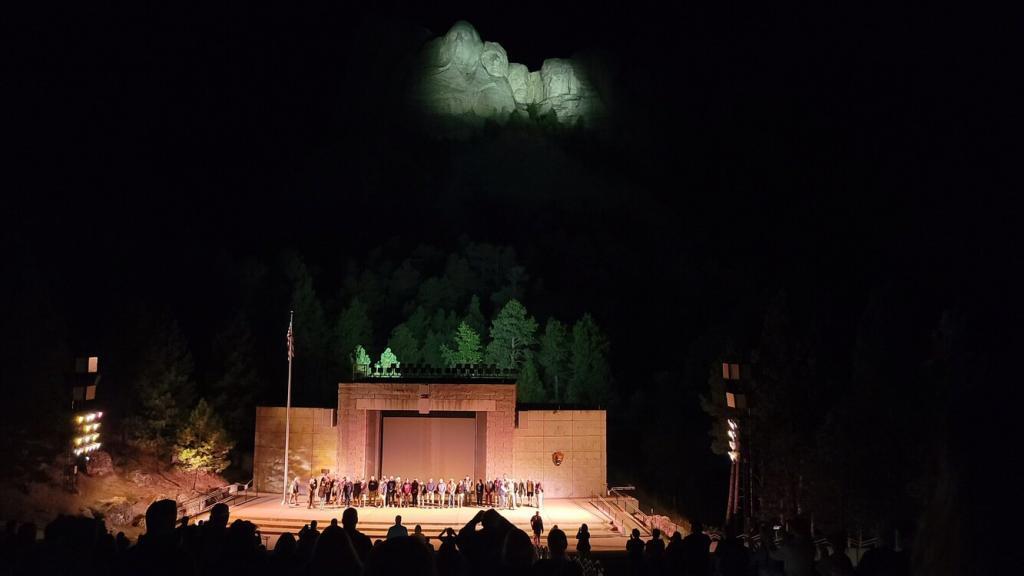
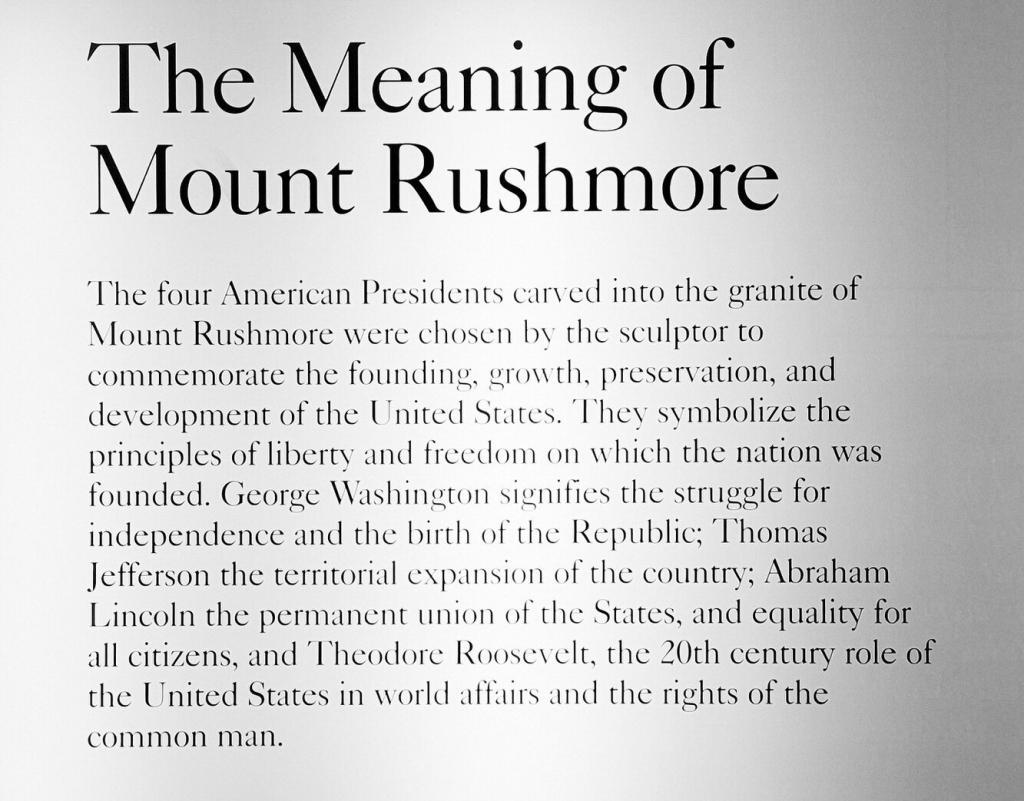
Custer State Park
When we were doing our original planning for visiting the area we mostly focused on Mount Rushmore, Custer and Hill City. We really didn’t know much about Custer State Park until a friend of a friend mentioned it. Wow! Somehow we almost missed one of the best destinations in the area. Some of the can’t miss areas include the Needles Highway, the Wildlife Loop and Iron Mountain Road (which is technically outside the park). For Needles Highway, be careful is you have a large vehicle! The Needles Eye tunnel is only 8 feet wide which is about the same width as our dually pickup.
Custer State Park includes both granite peaks and rolling plains along with some gorgeous lakes fed by clear mountain water. We thought Sylvan Lake was the most beautiful. Encompassing 71,000 acres in the Black Hills, Custer State Park is home to abundant wildlife and adventure; camping, hiking, biking, swimming, fishing, or relaxing, there’s something there for everyone.
Buffalo (bison), elk, and other animals can be found throughout the park. The bison heard of over 1300 head roams the park throughout most of the year but in September an annual roundup is held and the female and their young are herded into a large corral on the southern end of the park. There they are sorted, checked and tested for disease. Some are auctioned off to manage the size of the herd based on the forage available in the park.
Note: The term “buffalo” may be considered a misnomer for this animal, as it is only distantly related to either of the two “true buffalo”, the Asian water buffalo and the African buffalo. However, “bison” is a Greek word meaning ox-like animal, while “buffalo” originated with the French fur trappers who called these massive beasts bœufs, meaning ox or bullock – so both names, “bison” and “buffalo,” have a similar meaning. In reference to this animal, the term “buffalo,” which dates to 1635, has a much longer history than the term “bison,” which was first recorded in 1774.
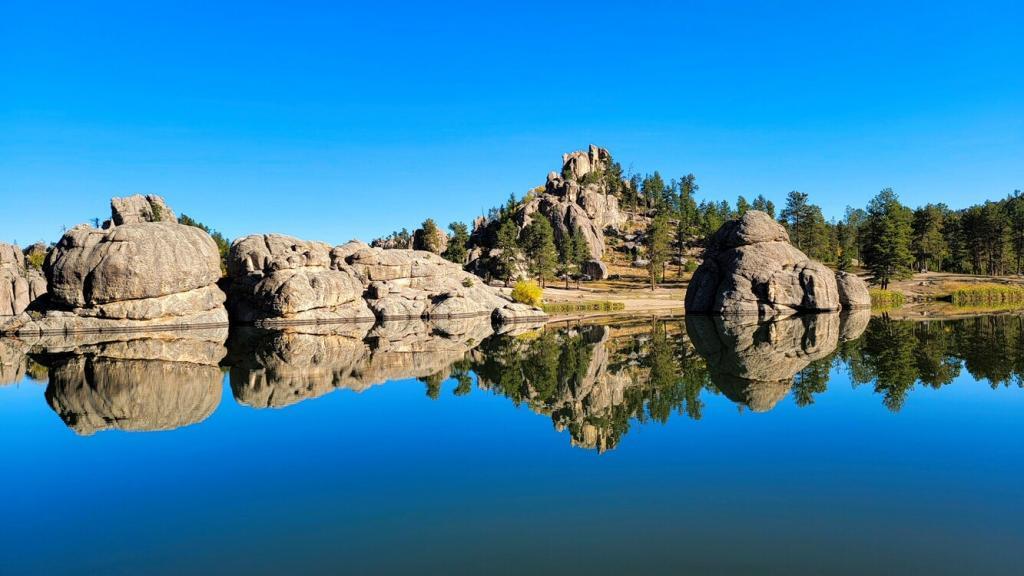
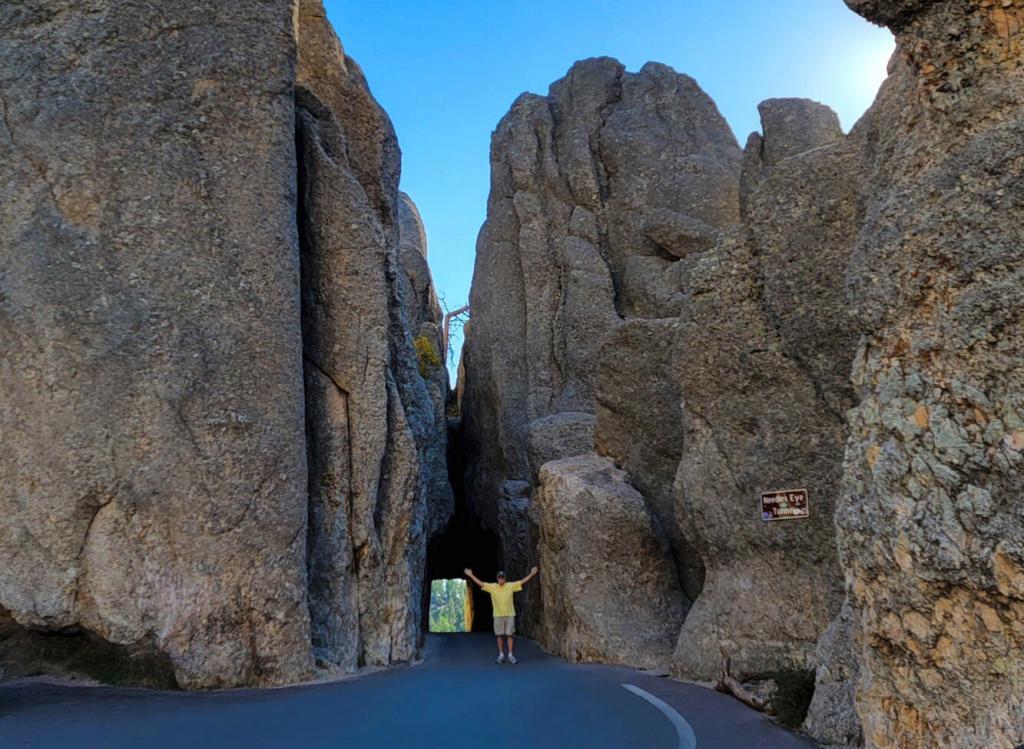
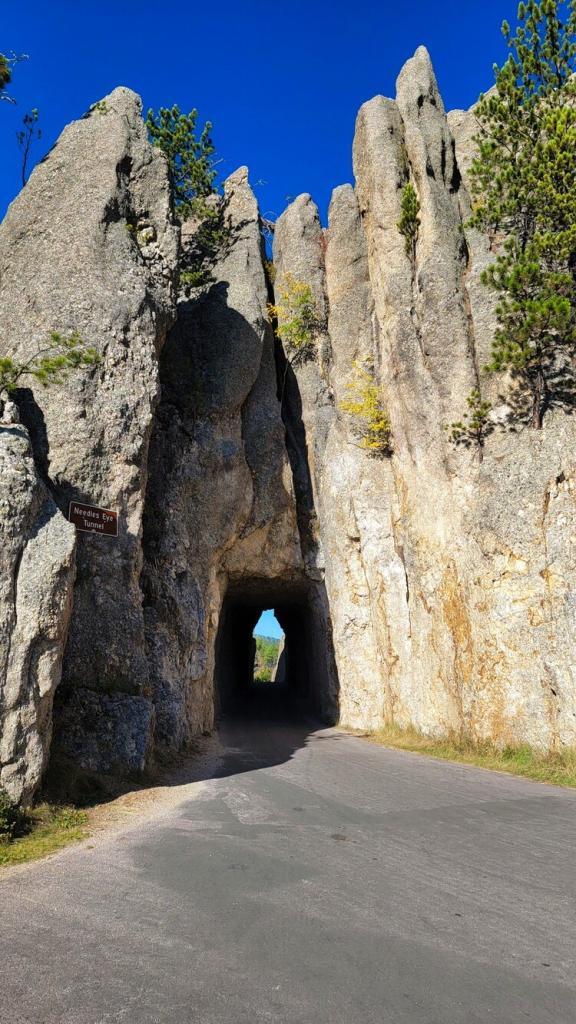

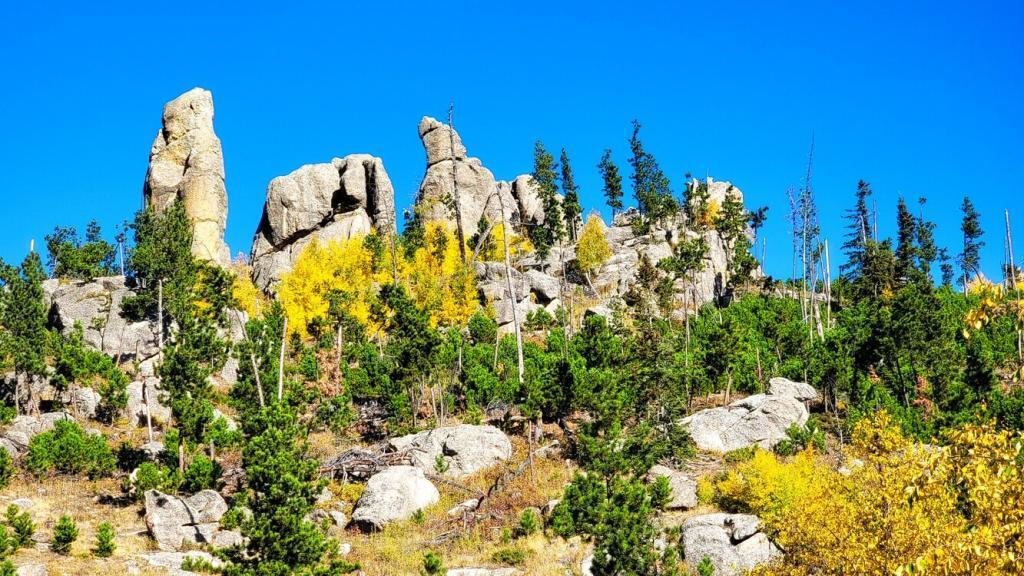

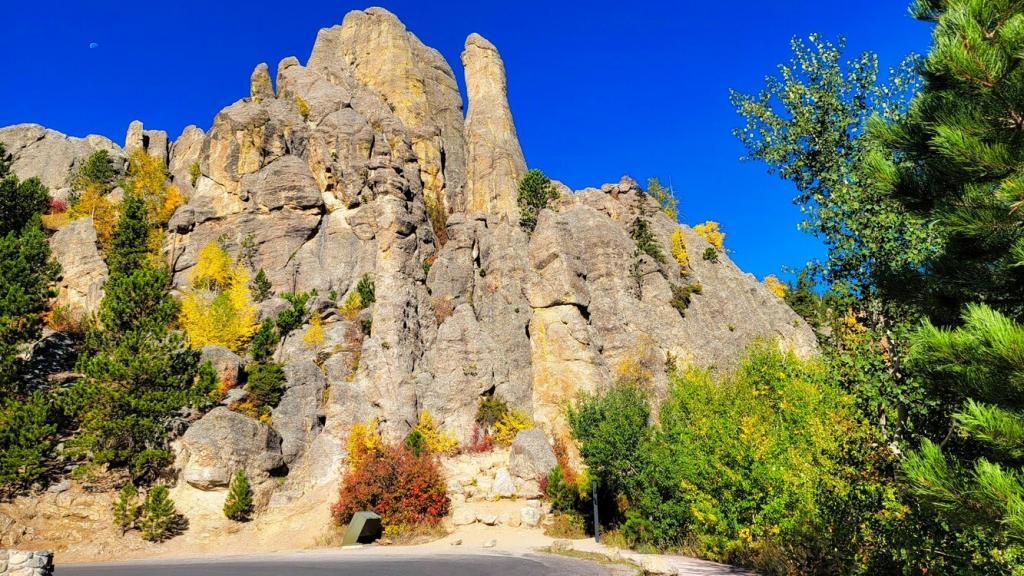


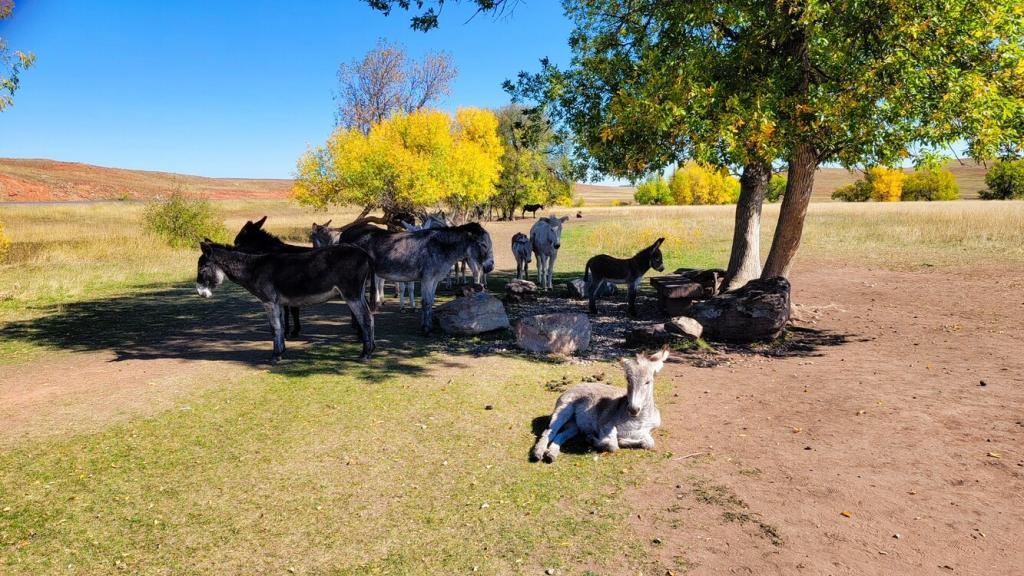
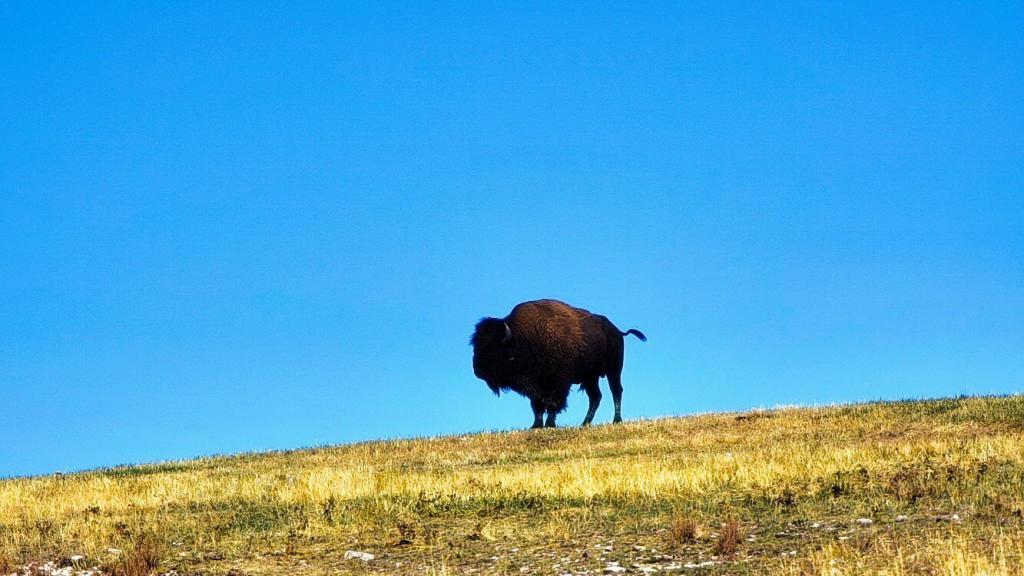
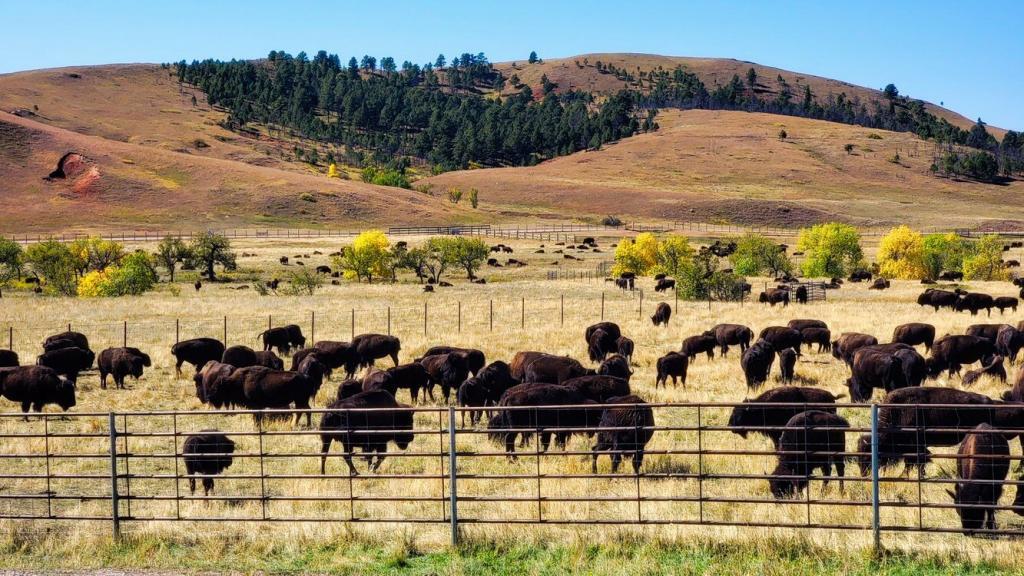
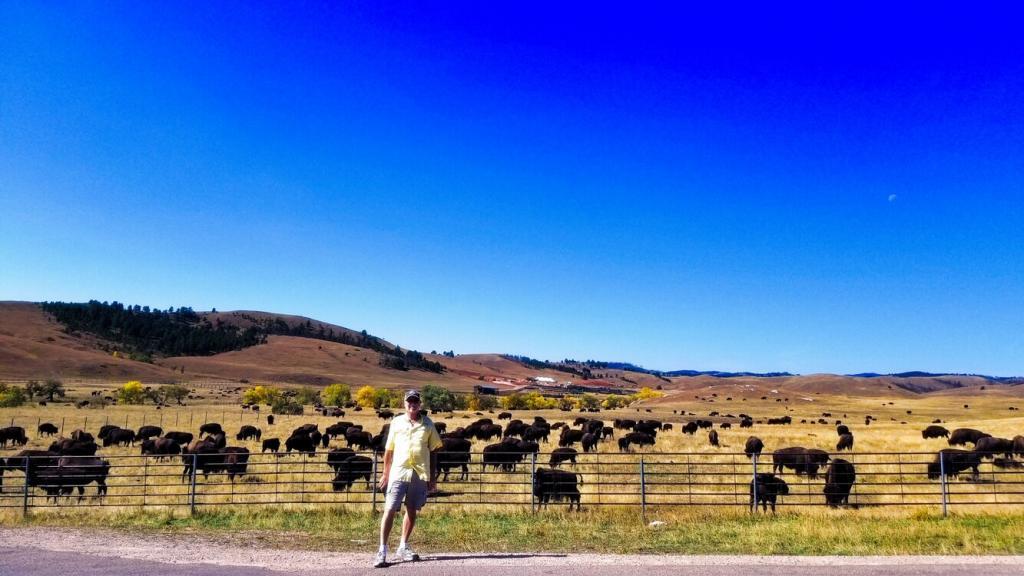
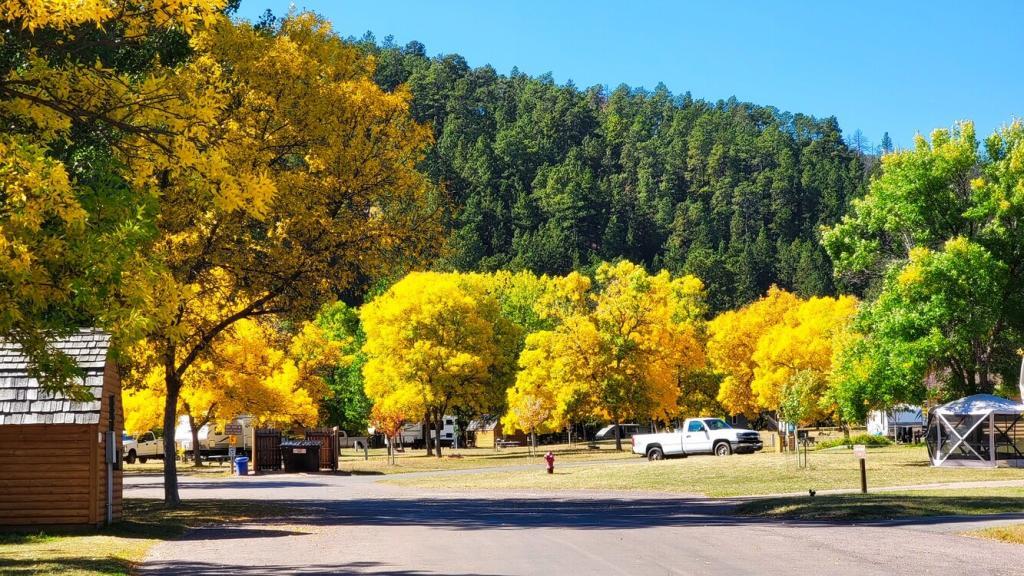
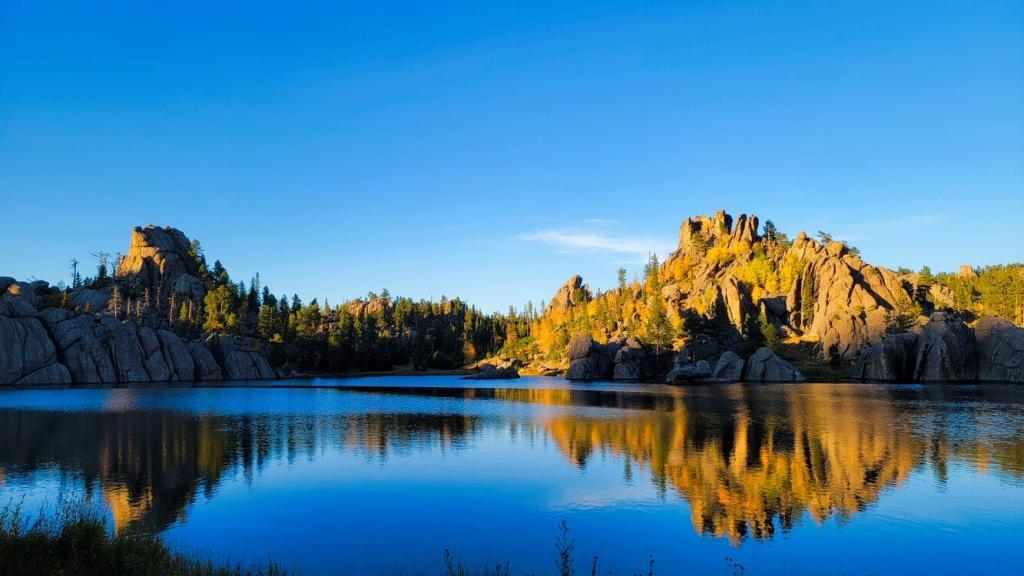
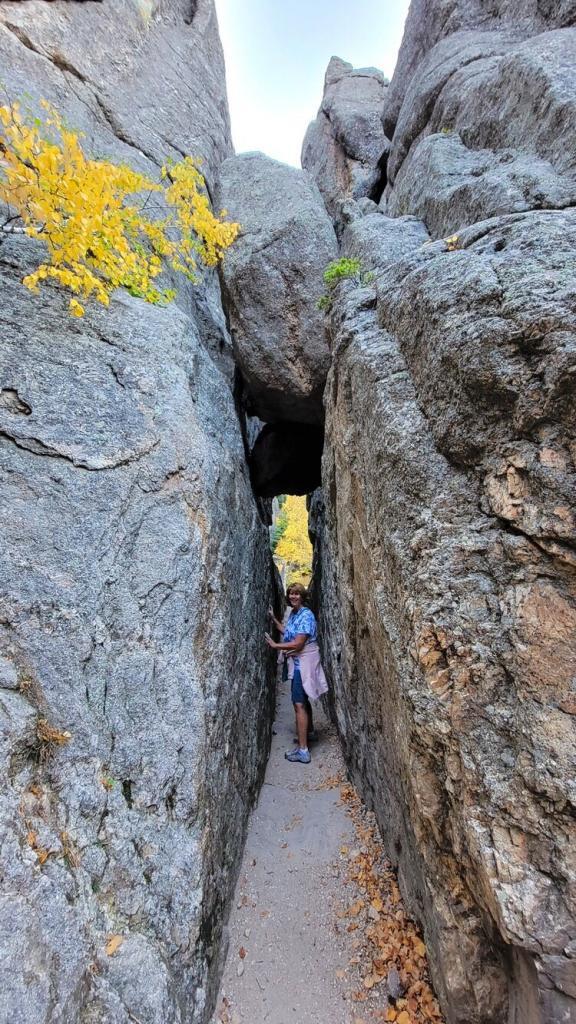



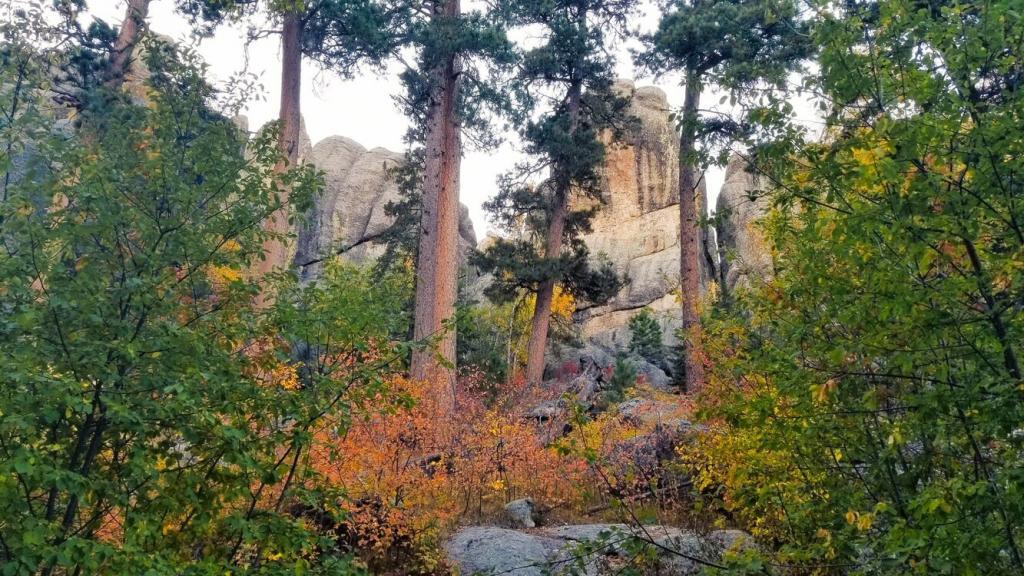
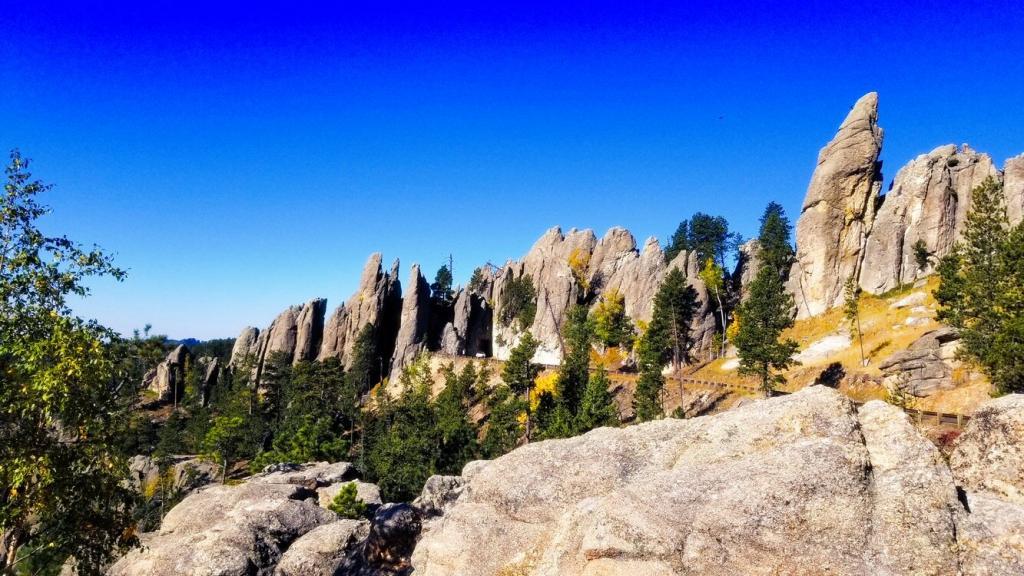
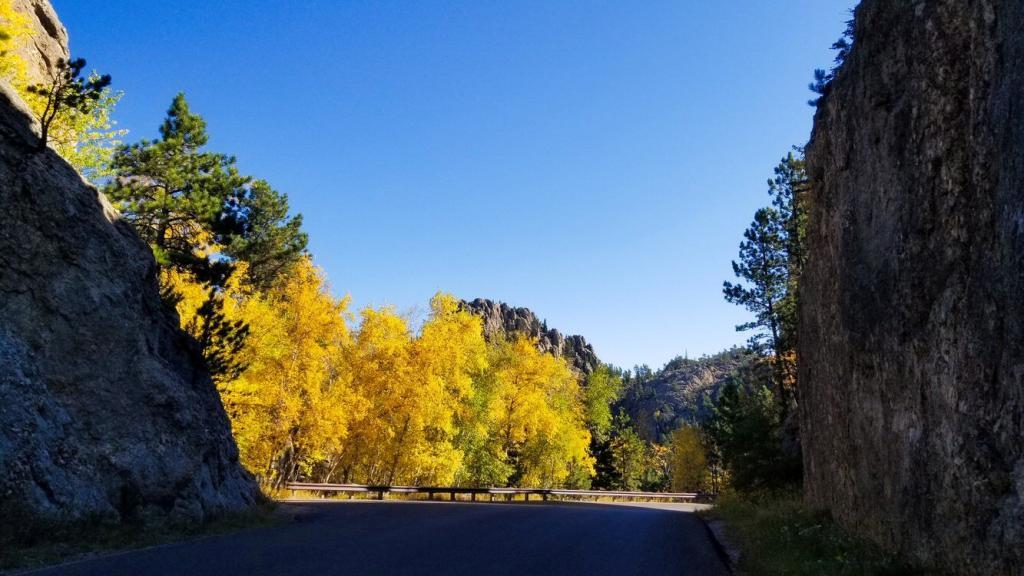
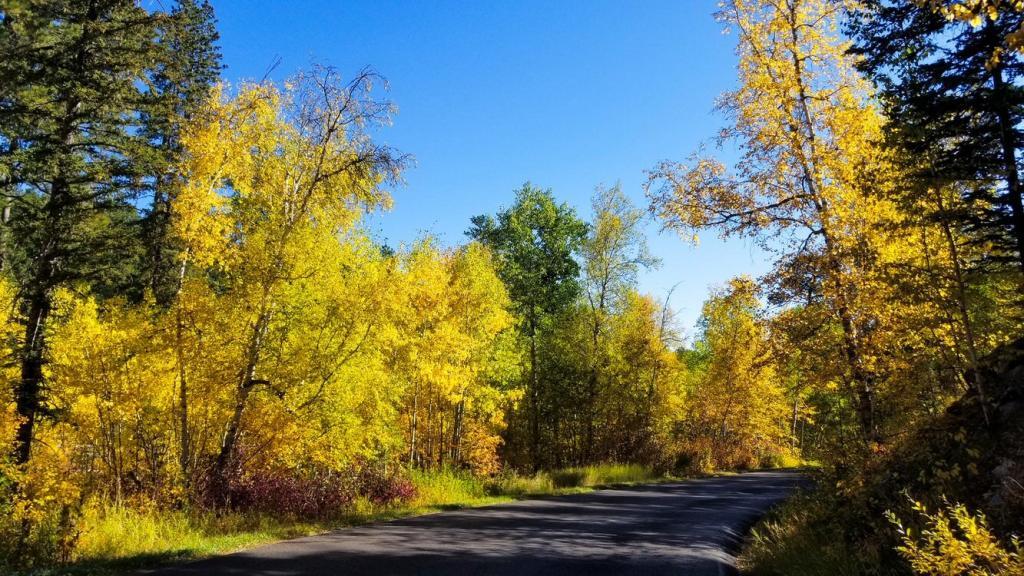
Hill City
Hill City is a small town about 15 miles northwest of Mount Rushmore that has numerous restaurants, shops, grocery stores, wineries and gas stations. It is the closest town on the west side of Rushmore and is a good place to visit when you need a break from outdoor activities.
In 1876, Hill City was the first settlement established in conjunction with the initial discovery of Black Hills gold in French Creek, just 13 miles south of where Hill City sits today. Miners came from far and wide to prospect in and around this small mountain town, now referred to as “The Heart of the Hills.” Although the first settlement in the county, it was the second community to develop in the greater Black Hills area, springing up shortly after the town of Custer.
After the bulk of gold prospecting relocated to the Northern Hills, Hill City reached a state of near abandonment by settlers before tin and the railroad drew the pioneers back in. From the mid-1880s to the turn of the century, the town revived and thrived on the discovery of tin, a malleable and silvery-white metal pulled from the rock in the Hills around the town. However, Hill City’s “tin age” was short-lived. When the tin frenzy subsided, the industrial railroad took over and dominated the first half of the emerging century. By the late 1950s, the Black Hills Central Railroad introduced the first passenger steam train on the line, commonly referred to today as the “1880 Train.”
In recent history, the Hill City community has continued to evolve as an archeological, paleontological, and geological hub for Black Hills exploration and discovery. The most complete Tyrannosaurus Rex skeleton in paleontological history was discovered in the Hill City area and named “Sue” after the paleontologist who unearthed her.

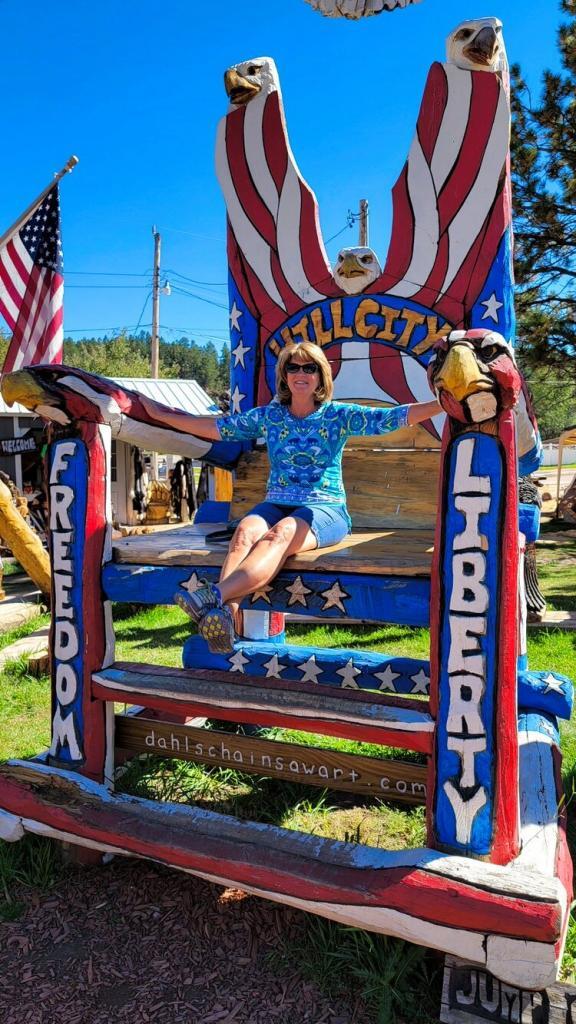
1880 Train
The 1880 train is a tourist attraction located in Hill City. The train travels several times daily between Hill City and Keystone for a distance of about 20 miles and takes about an hour each way. Not only is it fun to travel by a steam powered train but you’ll see some gorgeous scenery along the way as well as learn a bit about the history of the area.
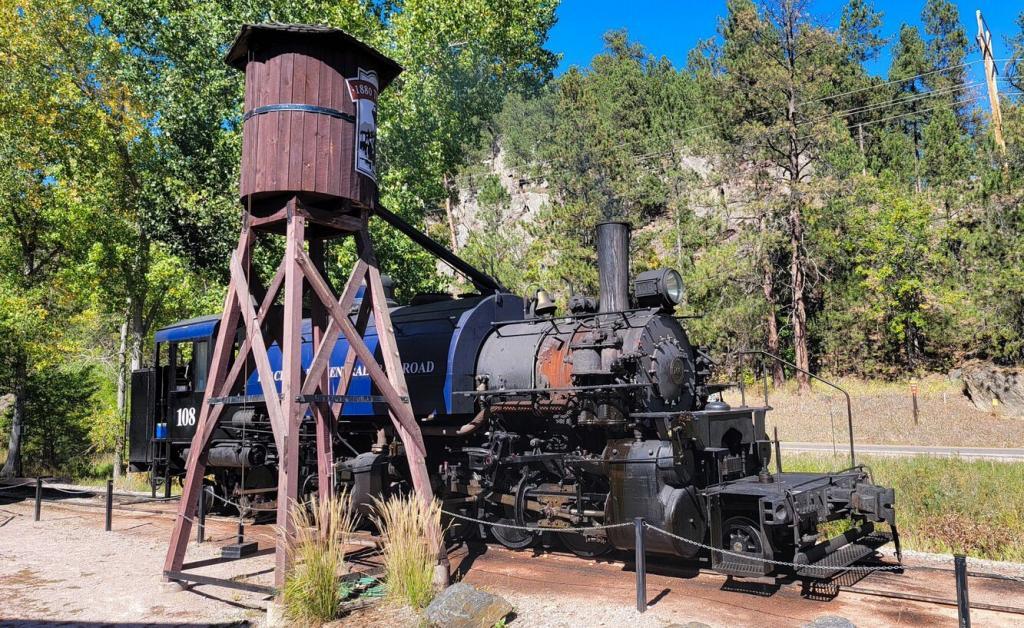
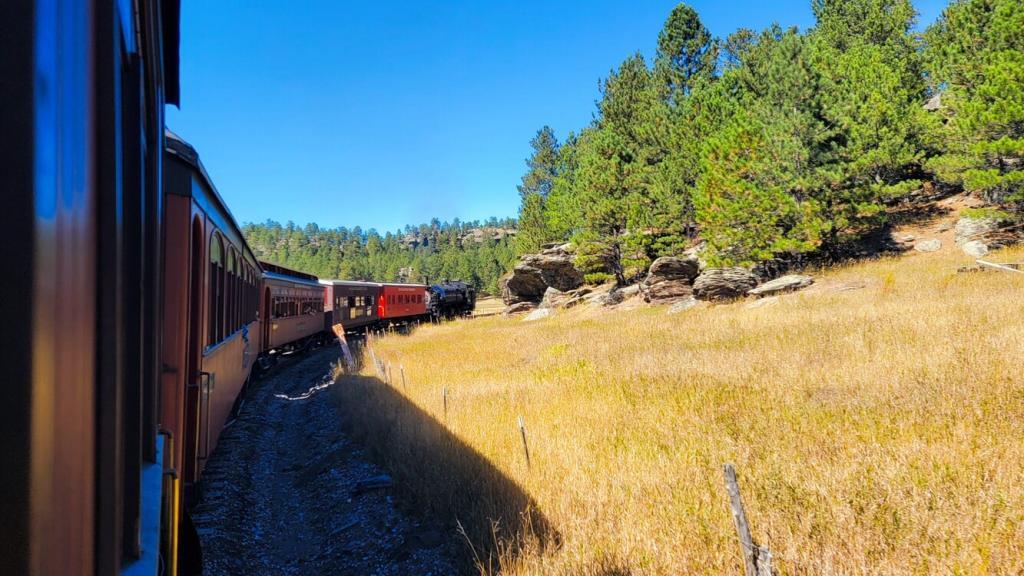
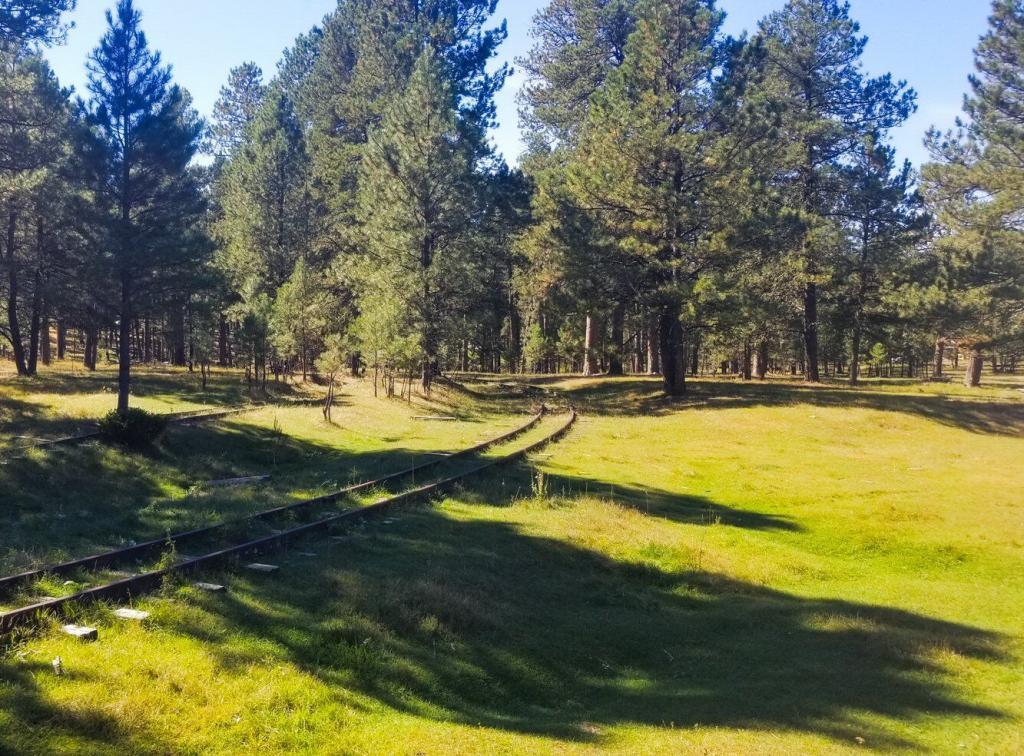
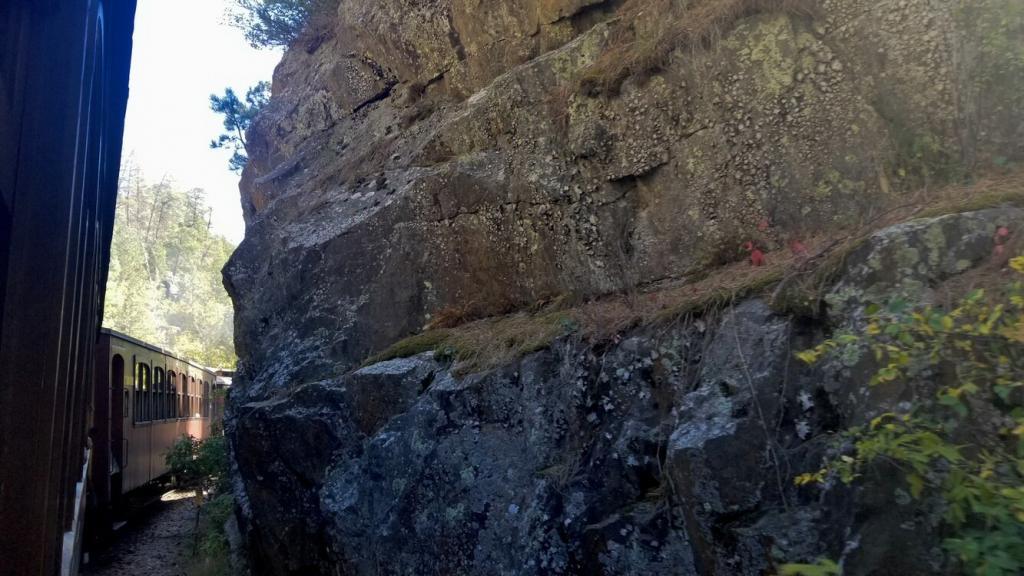
Iron Mountain Road
Similar to Needles Highway (although the tunnels are wider on Iron Mountain Road) the area includes numerous granite rock formations and spectacular views. Iron Mountain Road is between Mount Rushmore and the northern edge of Custer State Park.
Two of the three tunnels along Iron Mountain Road have views of Mount Rushmore from the tunnel which is a great opportunity for a good picture. One of the most interesting features of this route are the three pigtail bridges. A pigtail or spiral bridge is a road bridge which loops over its own road, allowing the road to climb rapidly. This is useful in steep terrain, or where the approach road to a bridge would terminate too far from the bridge’s end. The shape of the bridge forms a helix, not a spiral.
Cecil Gideon designed the bridges in 1932 when many felt they could not be built. Riding on Horseback from his home near the Game Lodge in Custer State Park, Gideon and Senator Norbeck spent long hours laying out the Iron Mountain Road including the tunnels that frame Mount Rushmore and the pigtail bridges.
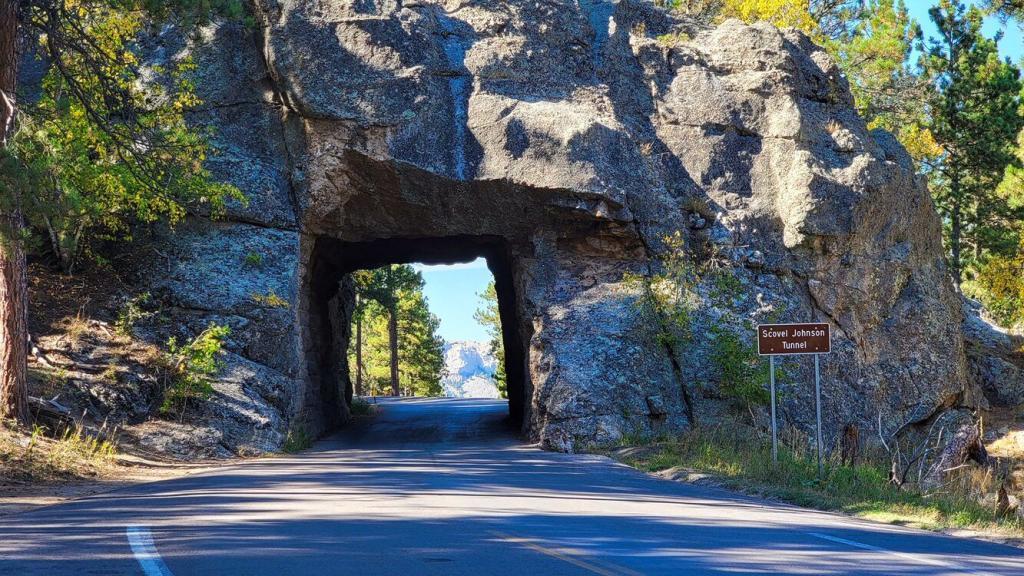
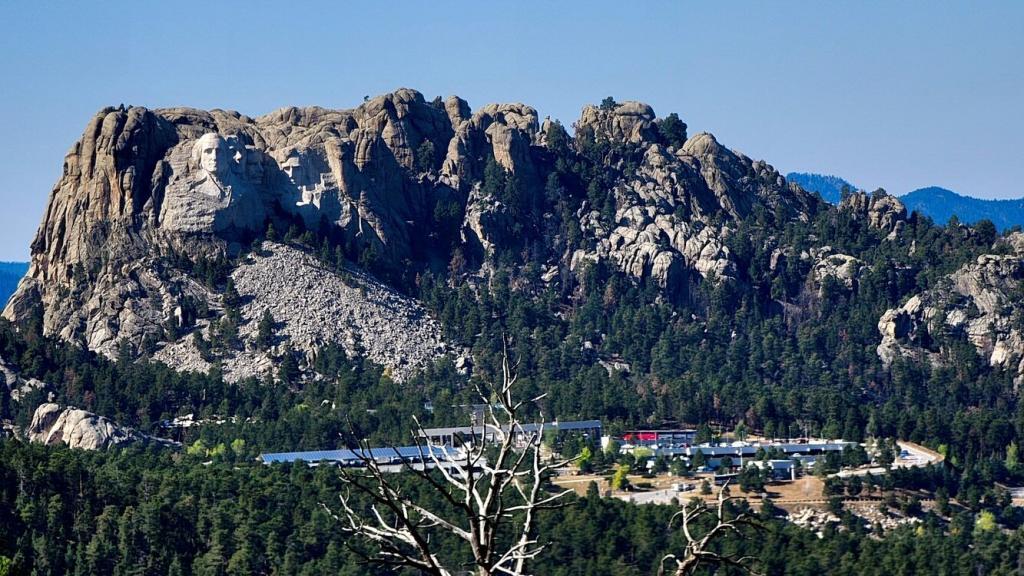

Custer
After Hill City, Custer is the next nearest town to Mount Rushmore on the west side. Today the town is home to numerous restaurants and shops as well as several museums that tell the story of early life in the area.
Although there were French fur trappers and traders in the Custer area by 1796, there was no town of Custer until August 10, 1875. On that date General George Crook persuaded the miners illegally in the area to leave until the Black Hills became opened to white settlement. Crook allowed the assembled miners to lay out and name a town and allowed seven men to remain in the area to protect their mining claims. Veterans of the Civil War who had served in the Union Army suggested the name of Custer to honor the general who had made a reputation for himself.
The exodus of miners in August of 1875 was short-lived. Many of them returned to the area before it was officially opened to settlement by the government. They had been lured to the area by reports from the 1874 expedition to the Black Hills and Custer’s report of the finding of gold on French Creek. Custer was followed within four months by the Collins-Witcher-Gordon party of pioneers who settled near Custer’s former “permanent” camp. The Gordon Stockade was built by that party and it was the magnet that drew the miners to the area in 1875. The Gordon party was evicted from their stockade in April of 1875.

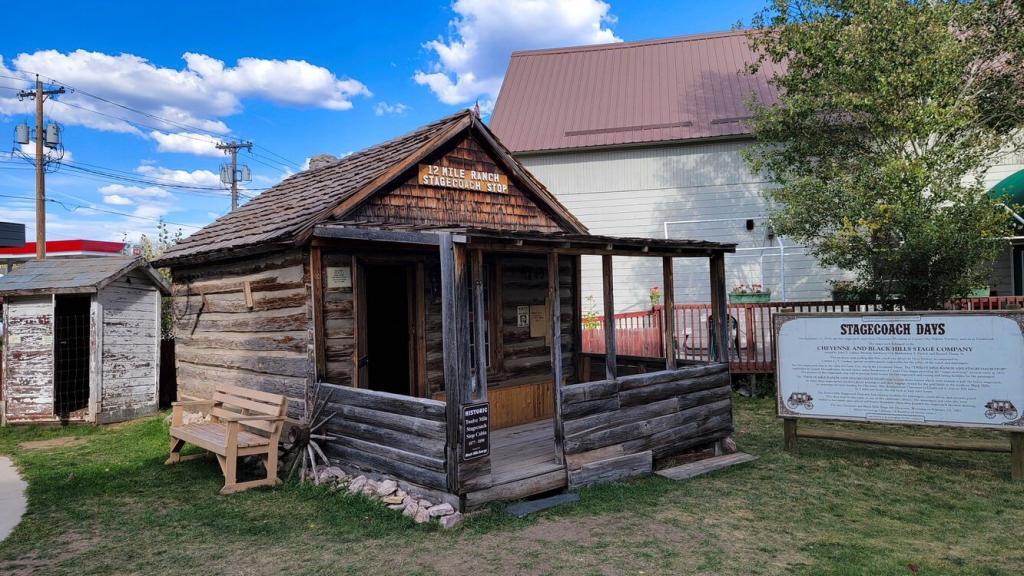
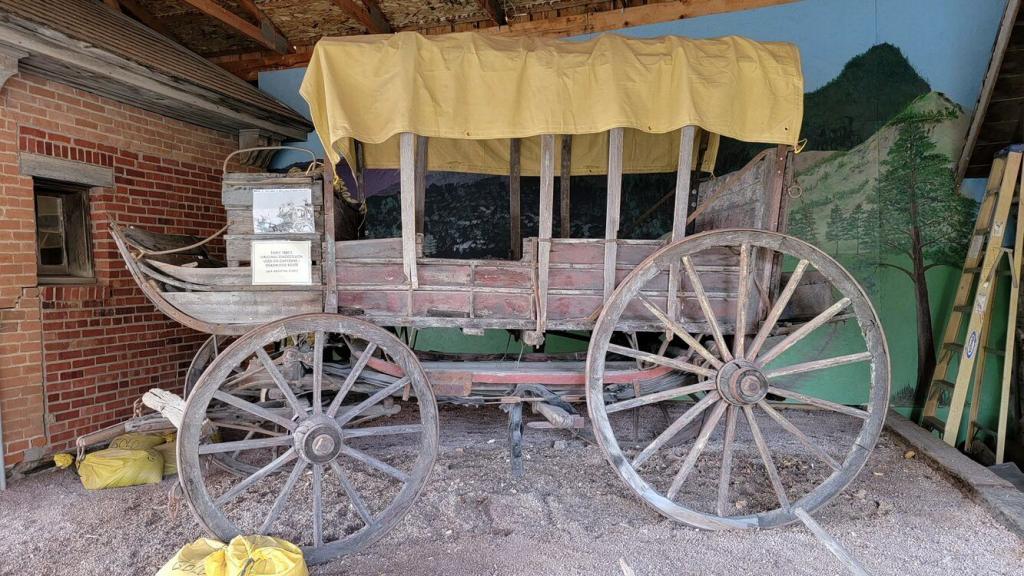
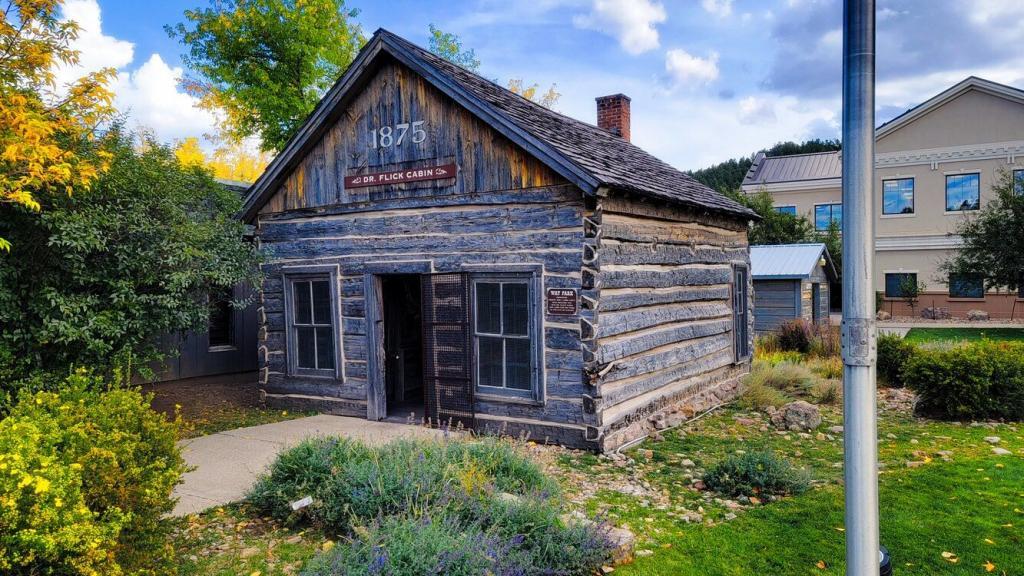
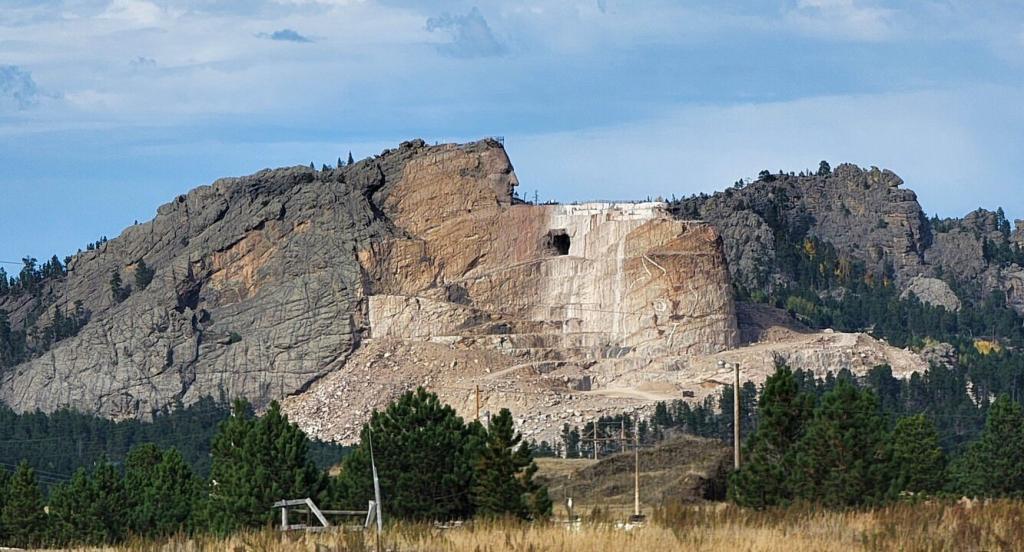
Park Review – Mount Rushmore KOA Resort at Palmer Gulch
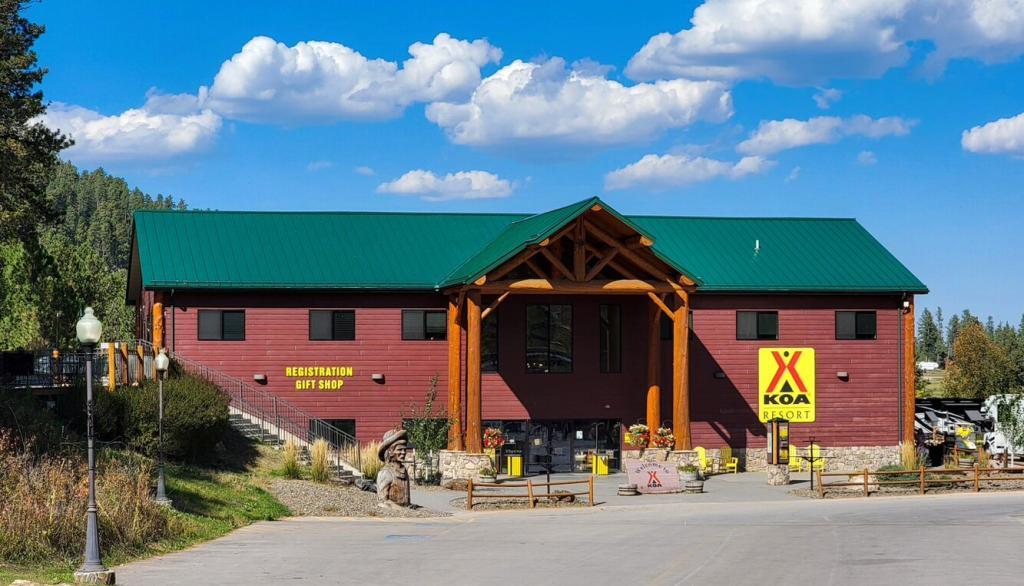

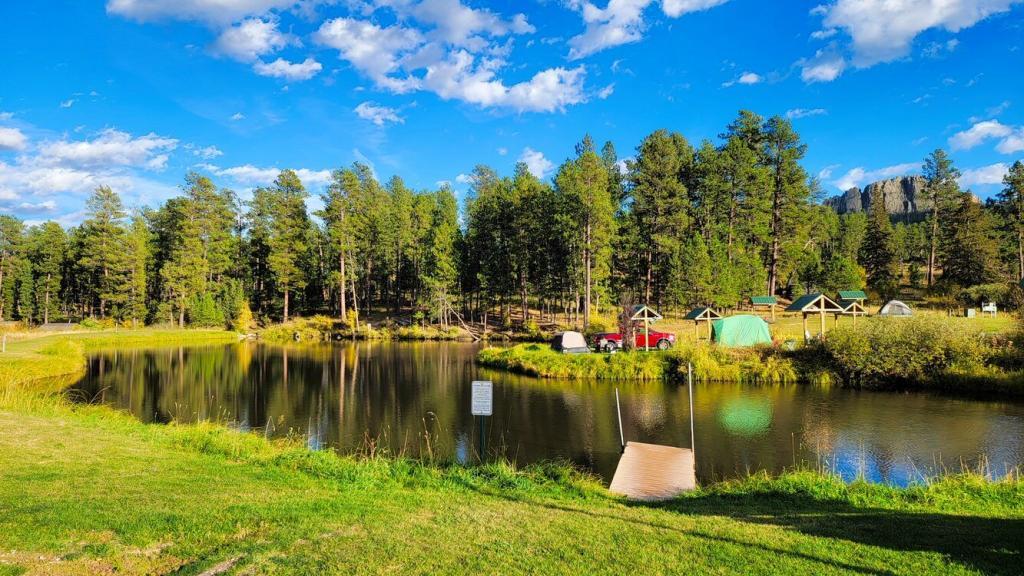
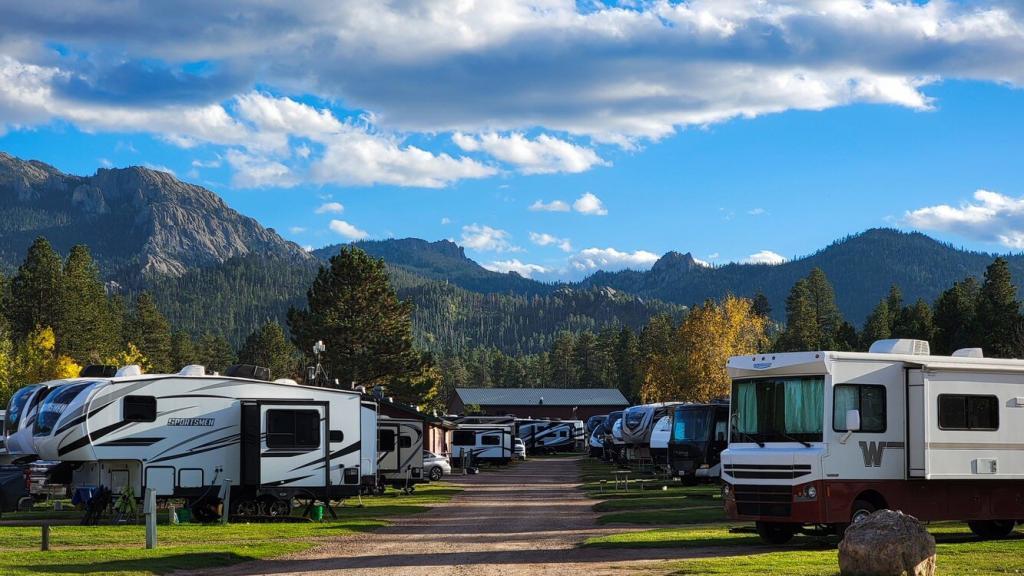
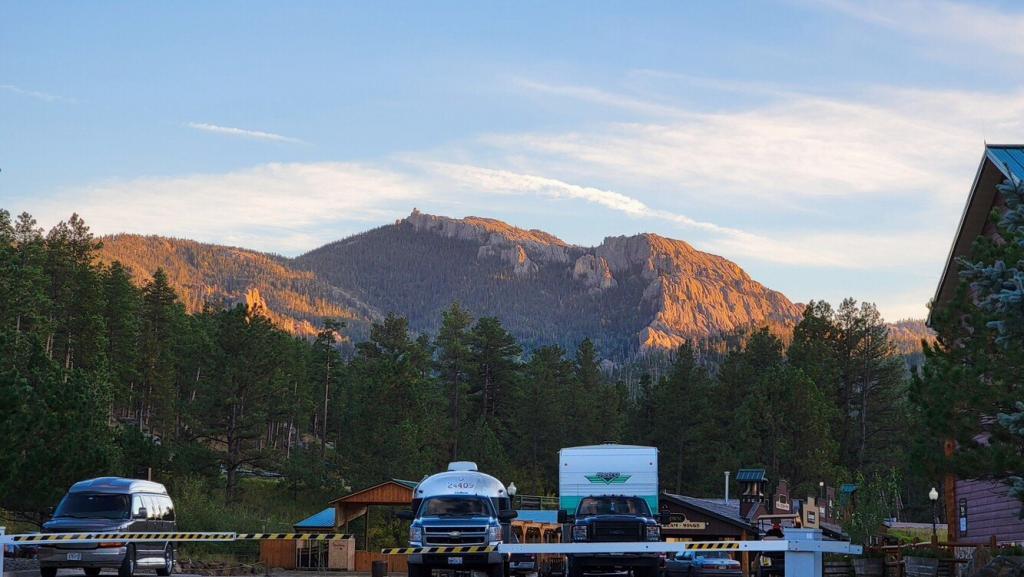
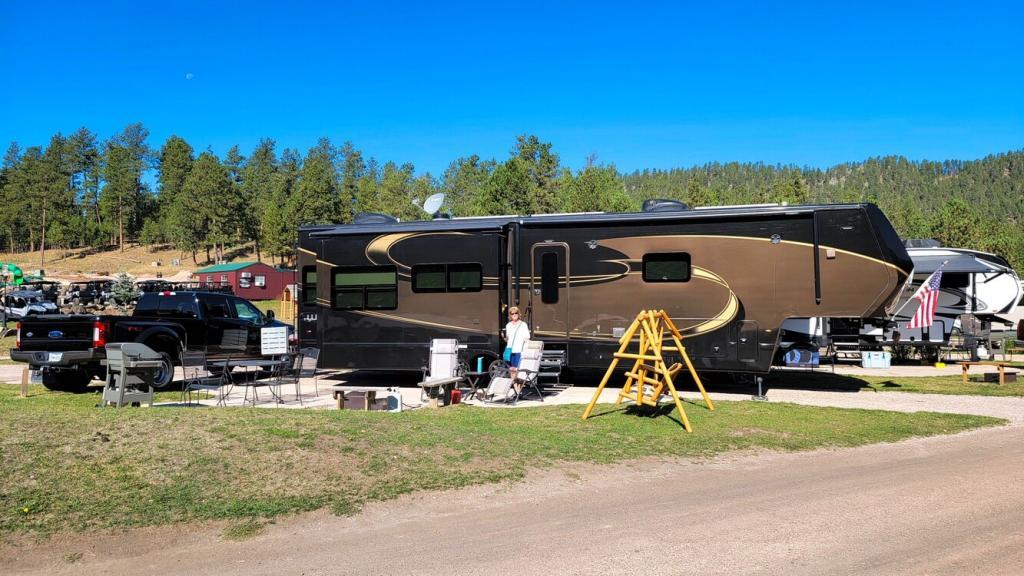
Rating: ⭐⭐⭐⭐
Site Quality / Amenities: The sites are gravel, many are full hookup with 50A service. We had a deluxe patio site so in addition to having a patio we had a table with chairs, a grill, a swing and a fire pit. We were on an end site so we had a bit of extra room although we were near the office and there was a lot of traffic during the day. This is a KOA Resort and as such it had numerous amenities. Unfortunately for us, after Labor Day many of them close down.
Type: Commercial
Access: On SD244 about 3 miles from US385 and about 6 miles from Mount Rushmore. It’s a bit off the beaten path but roads are good and grades along the roads although steep at times are fairly short.
Staff: All staff we encountered were friendly and helpful; offering tips for the local area. Given that the staff was beginning to leave since our last day here is the end of their season, the ones still there were working long hours. Because of that, we were surprised how energetic and cheerful they were.
Cellular/Wi-Fi: I do not believe the park had Wi-Fi and Verizon was almost non-existent – working at times and not at others. Verizon data was very unreliable. AT&T worked decently although it was prone to be intermittent. Speeds were slow.
Restaurants: Bumpin Buffalo Bar and Grill, Hill City – Standard bar and grill fare, the food was good. Alpine Inn, Hill City – We did not get to eat there but it was recommended for steaks by some folks we met in Elephant Butte. Powder House Restaurant, Keystone – Great steaks. Black Hills Burger and Bun, Custer – Great burgers recommended by a friend.
Nearby parks: Crooked Creek Resort – Pretty nice park but it would likely be a bit tight for us to navigate and many sites would be too short. Crooked Creek is definitely not a resort like the KOA is. Rafter J Bar Ranch – At the junction of US385 and SD244, J Bar Ranch would be a good choice for us. It is less of a Resort but had all the amenities we would need whereas the KOA would be better for folks with kids. Sites were pretty large and most were clear of trees so satellite should be no problem. It closed about a week before the end of September.
What we liked: Friendly staff. Many resort activities during the summer season (most close after Labor Day). Convenient to Mount Rushmore, Custer State Park, Custer, the Crazy Horse memorial and Hill City.
What we didn’t like: Our site was at the front of the park and it tended to be a bit busier there with people checking in and out. The sites are short for big rigs forcing everyone to park on the grass. This created a situation where the roads near the sites were crowded and difficult to navigate. Most of the resort amenities including the main restaurant were closed after Labor Day.
Verdict: If we come to the area again, we’ll shoot for Rafter J Bar Ranch first and the KOA second. Families with kids would be happier with the KOA due to many kids activities. If you come after labor day, expect many amenities, restaurants, and other places to be closed for the season. However, that’s when the gorgeous fall colors are present and things are less crowded.
One thought on “Hill City, SD”
Oh my gosh the fall colors were absolutely beautiful! Glad you enjoyed your journey through that part of the country!